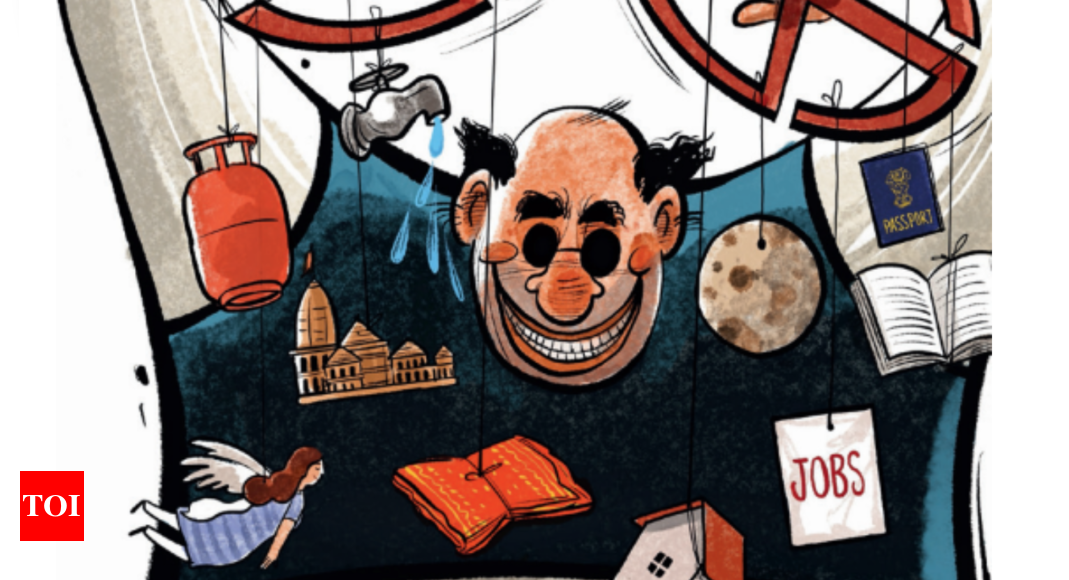[ad_1]
Significant since Raj days
Manifestos mattered even before Independence, when the British gradually devolved powers of legislation and administration to elected representatives. In hindsight, most social, political and economic reforms undertaken at the provincial level between 1919 (when provinces got legislative and financial authority) and 1947, came directly from these party manifestos. Here are some samples:
1916 | Manifesto of Justice Party advocated a more vigorous education policy for nonBrahmins, and strengthening and deepening of constitutional reforms.
1920 | Manifesto of Bal Gangadhar Tilak’s Congress Democratic Party promised to promote indigenous systems of medicine.
1923 | Manifesto of National Unionist Party in Punjab advocated fair distribution of fiscal burden between agricultural and other classes.
1937 | Congress manifesto recognised poverty and indebtedness of peasants as critical problems and called for reduction of agricultural rent.
1937 | Muslim League manifesto dealt with funding cottage industries and making elementary education free and compulsory.
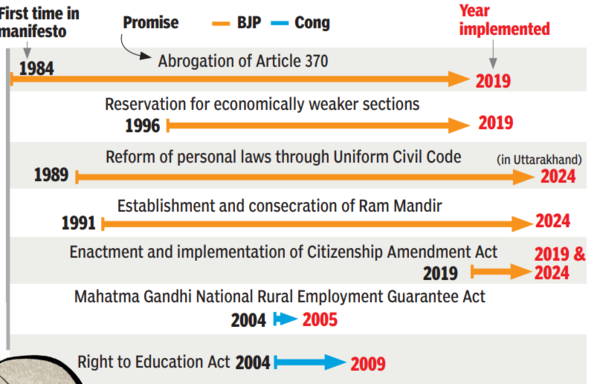
Most promises fulfilled
The good news is that governments have shown increasing commitment to their manifesto promises over the past 20 years. For instance, UPA-1 fulfilled (fully or partially) 46% of the promises from Congress’s 2004 manifesto. UPA-2 fulfilled 64% of the promises from Congress’s 2009 manifesto, and NDA-1 did even better, fulfilling 71% of the promises made in BJP’s 2014 manifesto.
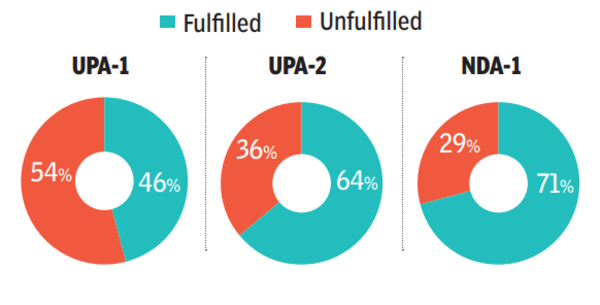
Who writes them?
Manifesto committees — small empowered bodies within parties that mostly comprise their senior leaders — make these documents, setting out a roadmap of reforms to woo the electorate. Manifestos of Congress, CPM, and DMK are already out this year. Congress has promised to restore full statehood to Jammu & Kashmir, make Delhi’s LG subservient to the state govt, and abolish the Agnipath scheme. CPM has promised to scrap legislations such as Prevention of Money Laundering Act, Unlawful Activities Prevention Act, and Citizenship Amendment Act, and introduce state financing of elections. DMK has promised to delete Article 356 (President’s rule) and scrap the offence of sedition from criminal law. BJP is finalising its manifesto.
Keep them simple, please
Although manifestos are meant for the common person, they are becoming hard to understand, and wordy like academic papers. Recent manifestos require at least graduate-level comprehension skills, which less than 10% of Indians have. Ideally, they should be concise, easy to understand and published in all Indian languages, not just Hindi and English.
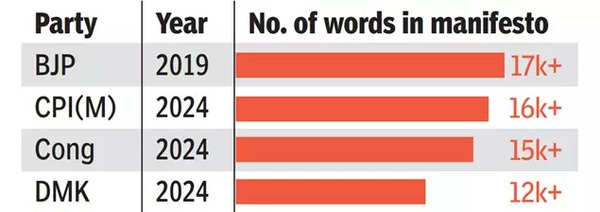
Go beyond Roti, Kapda, Makaan
The title of Manoj Kumar’s 1974 hit ‘Roti, Kapada aur Makaan’ summarised India’s development vision at the time, but half a century on, as the country turns into an economic and technological powerhouse, it is time to supplement these manifesto goals with others, such as:
Insaan – to guarantee social & economic justice
Dukaan – to maintain free & competitive markets
Vigyaan – to digitise at pace across sectors & carefully regulate emerging technologies
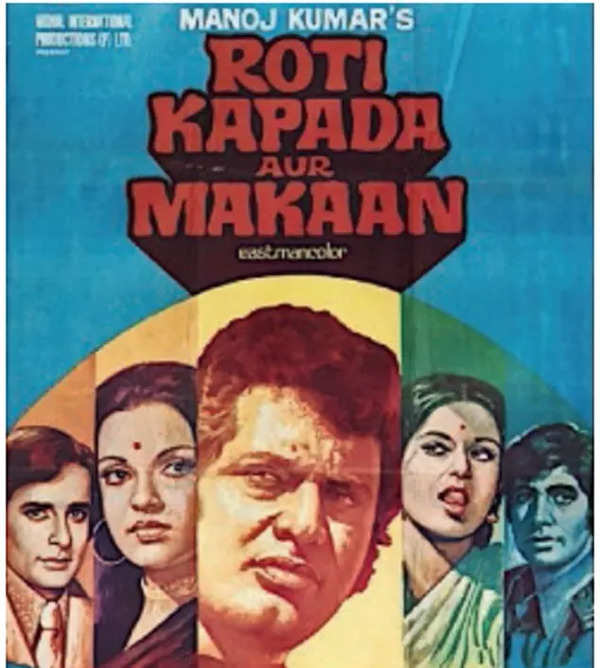
[ad_2]
Source link

